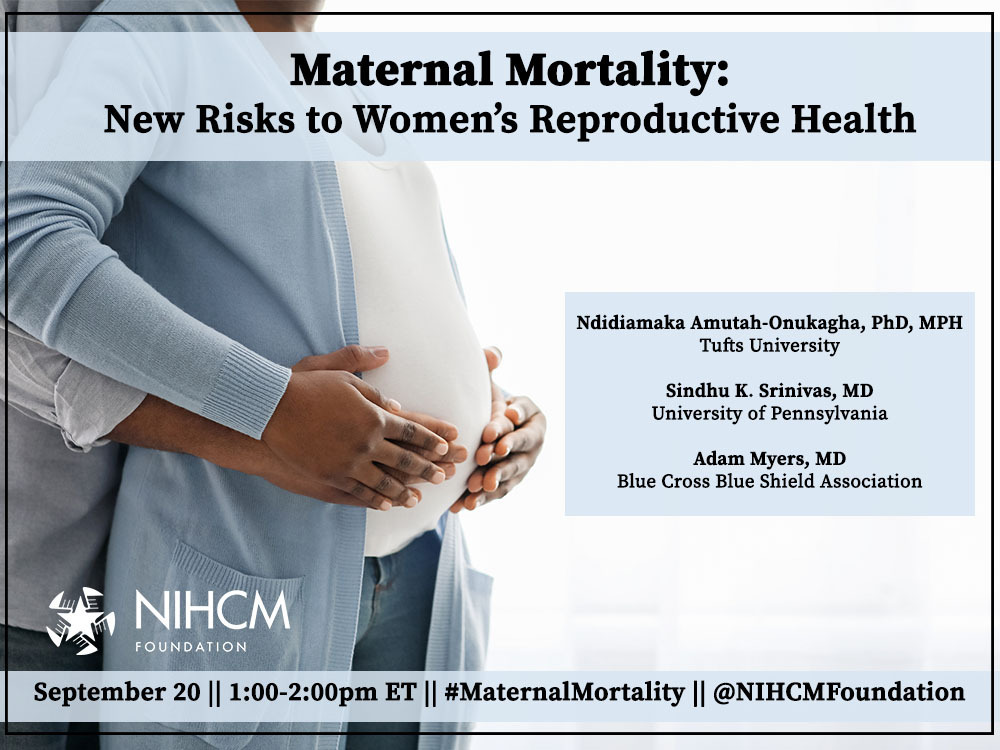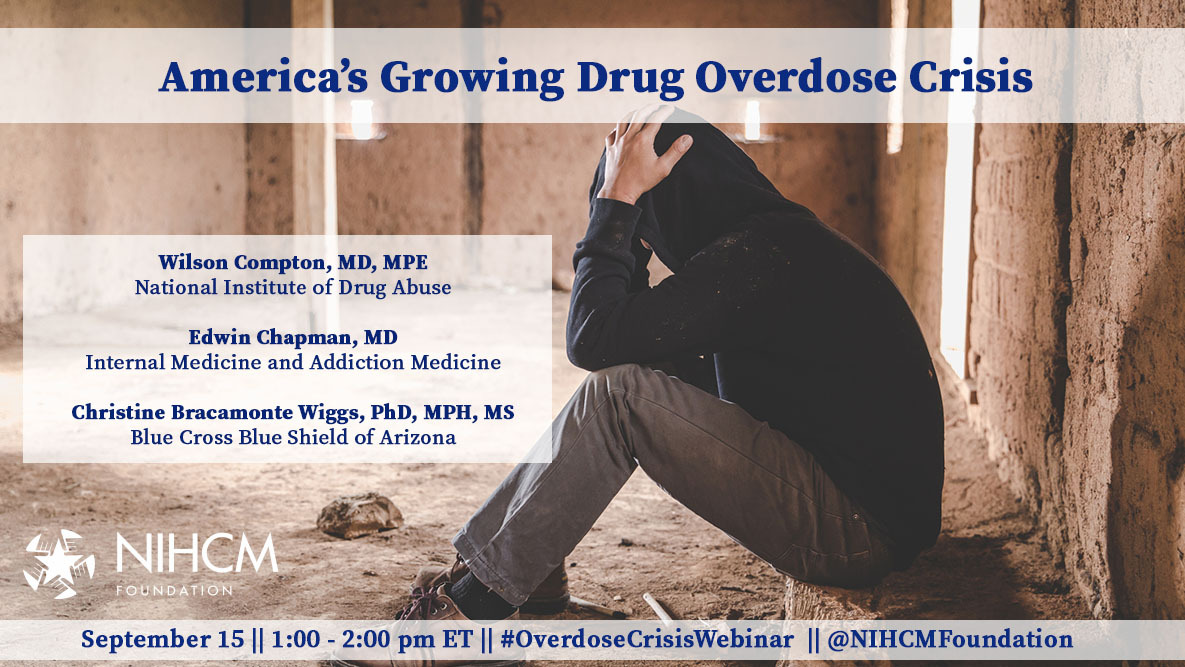NIHCM Newsletter / September 2022
Overlapping Public Health Emergencies
Released: September 8, 2022
Overlapping Public Health Emergencies
Life expectancy in the US fell for the second year in a row, driven largely by COVID-19 and drug overdose deaths. This contrasts with other high-income countries where life expectancy has rebounded. As the United States continues to respond to the pandemic, the emergence of monkeypox and polio highlights how overlapping emergencies strain the public health workforce and threaten multiple vaccination campaigns.
- Boosters: Newly authorized COVID boosters are now available. This shot is the first update to the vaccine targeting the omicron BA.5 subvariant. Federal officials say going forward COVID boosters will be treated as an annual shot, like the flu.
- Monkeypox Cases: It is not yet clear if the slowing pace of new monkeypox cases in the US will continue. The current at-risk population for monkeypox is mostly gay and bisexual men. Learn more about the frustration and pain patients have experienced over finding care.
- Vaccinating Against Monkeypox: The Biden administration announced a new equity program to improve access to vaccines. Black Americans have made up nearly a third of monkeypox cases in recent weeks but have only received about 10% of vaccine doses.
- Poliovirus: The return of polio to the US is a wake-up call to get vaccinated against the once-defeated virus. Learn if you received the polio vaccine and are protected against the virus.
Resources & Initiatives:
- Learn more about the new COVID booster shots and how to get up to date from the Centers for Disease Control and Prevention (CDC).
- The Caring Foundation of Texas’ Care Vans are deployed to provide free vaccinations to students in the Dallas and Houston area.
- Learn what scientists know about how monkeypox spreads and about monkeypox and kids.
- Learn how to slow the spread of monkeypox from this publication from Blue Cross Blue Shield of Massachusetts.
- The CDC recommends that everyone 6 months and older get vaccinated against the flu, noting that fall vaccine campaigns will be complicated with both the flu and fall boosters being rolled out.

Register for NIHCM’s upcoming webinar on maternal mortality to hear experts discuss the impact of changes to reproductive rights and new approaches that may improve maternal health!
Incarcerated People’s Health
It is estimated that there are currently close to 2 million people incarcerated across the country. Between 1980 and 2014, the incarceration rate in the US went up by 220%. Incarcerated individuals are disproportionately impacted by chronic health conditions, mental illness, and substance use before, during, and after incarceration. While incarcerated individuals in the US have a constitutional right to receive health care, many do not have access to appropriate care.
- Health Care in Prisons: Roughly 63% of people with a history of mental illness do not receive adequate treatment while incarcerated. For incarcerated individuals that are pregnant, around 58,000 people a year, there are no federal standards for policies dictating abortion, maternal, and reproductive care. The overturning of Roe v. Wade may make these services even more restrictive or nonexistent.
- Infectious Diseases: Compared to the general population, infectious diseases are more prevalent among incarcerated populations. As of August 31, 2022, there have been at least 616,478 confirmed COVID-19 cases and 2,901 related deaths among this population. Prison health experts are now concerned that monkeypox will spread rapidly through the prison systems just as COVID-19 has. As of August 2, 2022, there were 533 confirmed monkeypox cases in an Illinois county jail, the first prison nationally to report any cases; since then, cases have been reported in prisons in Texas, Florida, and California as well.
- Climate Change and Living Conditions: Climate change is expected to bring increasingly hot summers, putting many incarcerated individuals at risk of heat-related illnesses. In Texas, which is one of at least 13 states without universal air conditioning in state prisons, more than two-thirds of the state’s 100 prisons do not have air conditioning, forcing prisoners and staff to live and work in triple-digit temperatures. Since 1998, at least 23 incarcerated people in Texas have died from heat-related illnesses.
Resources & Initiatives:
- NIHCM Grantee, Vox, published an article on health care in prisons and the impact of the COVID-19 pandemic.
- The Highmark Foundation and several other organizations provided grants to support meeting the health needs of individuals released from incarceration and connecting individuals to social supports.
- The Council on Criminal Justice released briefs on health care in the criminal justice system and potential new reentry policies through their Health and Reentry Project.
- Blue Cross Blue Shield of Michigan grantee, MADE Institute, helps to ease the transition from incarceration to society by providing re-entry care packages. The Institute’s founder recently spoke on NIHCM’s webinar on children’s health.

Register for NIHCM’s upcoming webinar on the drug overdose crisis.
The Opioid Crisis and Other Drug Use
NIHCM’s infographic on opioid overdose deaths allows readers to visualize how the crisis has both grown in magnitude since 2000 and changed in character. Synthetic opioids, fentanyl in particular, were involved in 83% of opioid deaths in 2020. In addition to the growing overdose and addiction crisis, there is also worsening substance use among young adults.
- Harm Reduction: There is a need to expand access to naloxone to ensure it is in the hands of the people who are most likely to experience or witness an overdose. Additionally, needle exchange programs like this one in rural Nevada, and supervised injection sites can save lives.
- Treatment: Experts say that the benefits of expanding access to methadone outweigh any risks and a recent report outlines how federal regulators can remove barriers to treatment. A recent study shares how pandemic telehealth reforms increased access to opioid use disorder medications.
- Young Adults: The most recent federal survey on drug use found record-high use of marijuana and psychedelics among young Americans ages 19 to 30. There was also an increase in nicotine vaping and excessive alcohol consumption. The stress of the pandemic has likely contributed to this rise.
Resources & Initiatives:
- See resources from Shatterproof for people struggling with addiction, such as support groups and where to get naloxone.
- A special report released by NIHCM grantee, STAT, examines an overdose cluster that killed eight Black people in St. Louis.
- As part of the Michigan Opioid Partnership, Blue Cross Blue Shield of Michigan awards four substance use disorder recovery communities.
- Learn more about harm reduction from this podcast episode created by Tradeoffs, a NIHCM grantee.
- A former NFL quarterback shared his struggle with opioid addiction with high school students as part of a program, in part created by Horizon Blue Cross Blue Shield of New Jersey.

“The pandemic’s resulting isolation and online schooling exacerbated youth mental health challenges”
Mental Health in America
As millions of Americans return to the workplace after nearly three years of the COVID-19 pandemic, many report or anticipate negative mental health implications. Among children, the pandemic’s resulting isolation and online schooling exacerbated youth mental health challenges. For many American students, there is anxiety surrounding returning to the classroom on a regular basis.
- Workplace Mental Health: Stress in the workplace can lead to decreased effectiveness and productivity. A recent survey found that nearly 71% of workers agree that employers are more concerned about employee mental health now than in the past. Many districts have turned to addressing the mental health challenges of educators as well as the children, aiming to reduce stress and burnout.
- Return to School: Poor mental health in adolescents is associated with lower productivity, school attendance, and higher rates of dropping out of school, all of which can impact future educational and career outcomes. A recent survey reported that 74% of parents believe schools should offer mental health days. However, several barriers including lack of awareness, social stigma, and economic challenges may inhibit the use of these days.
- Mental Illness is Not a Predictor of Violence Towards Others: While mental illness is often blamed as the cause of shooting events, it is not a useful predictor of violence towards others. Instead, recent research has shown that life crises are better predictors, suggesting that violence could potentially be averted.
Resources & Initiatives:
- Learn more about understanding what to look for and how to help with employee mental health and how leaders can encourage mental health in the workplace.
- Through its Social Impact program, Premera Blue Cross donated $3 million to address health inequities, mental health, and substance use disorder across Washington and Alaska.
- NIHCM recently released infographics on mental health in the US, detailing the importance of prioritizing mental health care and the stigma surrounding gun violence and mental health.
- Blue Cross Blue Shield of Arizona recently pledged over $1.3 million to organizations addressing mental health in the state, including helping to launch a Youth Mental Health First Aid program.
- NIHCM Grantee, PBS NewsHour, recently released a segment on mental health, focused on suicide, guns, and reducing stigma.
- Blue Cross and Blue Shield of North Carolina expanded its behavioral health network, strengthening access for rural areas and pediatric care.
See More on:

